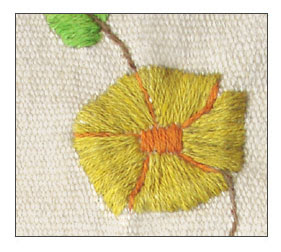Animals of the future Dougal Dixon
The other day at the uni, a student was cleaning the books in the bookshelf and stumbled upon this book After Man a zoology of the Future by Dougal Dixon a paleontologist written in 1981.

In the book Dougal presents his hypothesis on how the fauna and geography could change 50 million years from now.
The drawings of the creatures are really beautiful and wild. These futuristic animals include:
Rabbucks - Rabbucks are the future equivalent of deer and antelope. They live in almost any environment, and they mostly feed on grass. Their anatomy resembles that of a hooved mammals, though there are a few primitive hopping forms lurking around.
Gigantelope - The gigantelope take the niche in the future that was formerly held by elephants, giraffes, moose, and other large herbivores. Resembling the ancient sauropods, they are descended from antelopes, and range in a wide variety of forms. One subbranch have evolved into the large, moose-like herbivores of the north, the hornheads.
Predator Rats - The major group of predators in the future. Like our modern carnivorans, they exist on almost every continent and fill almost every carnivorous niche. They are descended from rats, and range in forms resembling polar bears, wolves, wolverines, cats, and even aquatic walrus-like forms.
Carnivorans - For the most part, Dixon assumes that carnivorans have either gone extinct, or have been forced into peripheral niches like the creodonts were in the Oligocene. A few still exist, such as the shurrack, and all but one, the striger, is descended from the weasels.


More on the creatures here

In the book Dougal presents his hypothesis on how the fauna and geography could change 50 million years from now.
The drawings of the creatures are really beautiful and wild. These futuristic animals include:
Rabbucks - Rabbucks are the future equivalent of deer and antelope. They live in almost any environment, and they mostly feed on grass. Their anatomy resembles that of a hooved mammals, though there are a few primitive hopping forms lurking around.
Gigantelope - The gigantelope take the niche in the future that was formerly held by elephants, giraffes, moose, and other large herbivores. Resembling the ancient sauropods, they are descended from antelopes, and range in a wide variety of forms. One subbranch have evolved into the large, moose-like herbivores of the north, the hornheads.
Predator Rats - The major group of predators in the future. Like our modern carnivorans, they exist on almost every continent and fill almost every carnivorous niche. They are descended from rats, and range in forms resembling polar bears, wolves, wolverines, cats, and even aquatic walrus-like forms.
Carnivorans - For the most part, Dixon assumes that carnivorans have either gone extinct, or have been forced into peripheral niches like the creodonts were in the Oligocene. A few still exist, such as the shurrack, and all but one, the striger, is descended from the weasels.


More on the creatures here


Comments